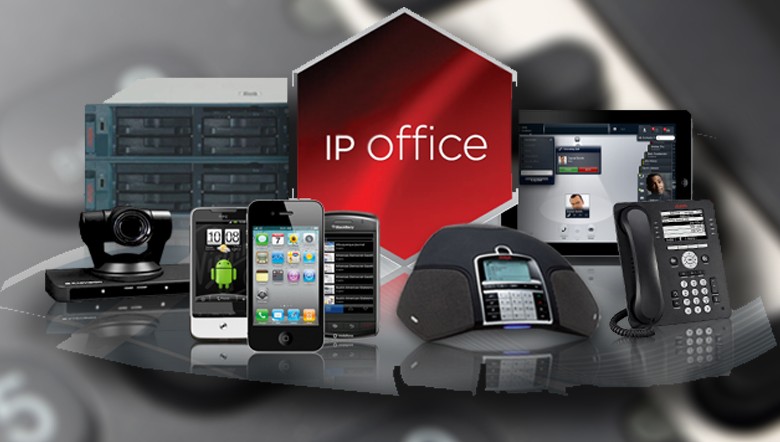Once your company grows past the small business stage, you’ll probably provide telephone services to the office through a private branch exchange (PBX) system of some kind—also known as a switchboard. This lets you share a number of incoming phone lines among a larger number of extensions, so it’s not necessary to pay for a separate line for every office employee or workstation, which saves money.
However, you can save even more money by using VoIP instead of traditional public switched telephone network (PSTN) lines. There are many IP PBX solutions available, including popular open source products such as Asterisk.
But the implementation and ongoing maintenance of an IP PBX system requires a type of expertise that your IT staff may not have. And if you go with a commercial product, the up-front costs for the hardware and software may be high.
One alternative is to use a hosted IP PBX service. Just as some organizations prefer to use a Web hosting service rather than run their own Web servers, some find it easier and/or more cost-effective to have their IP PBX services hosted offsite—a solution sometimes referred to as IP Centrex. Let’s look at some of the benefits of hosted IP PBX for organizations.
The Centrex concept
The concept of centralized PBX services (Centrex) came about in the 1960s in regard to traditional phone service; the telephone company hosted the PBX service at its central offices (COs). In early systems, an attendant handled operations, controlling the switching via a complex console.
Centrex service never became as popular as on-site PBX systems, and its primary use was at enterprise-level companies and government agencies. However, the combination of Centrex-type service with IP delivery makes this concept very attractive to many businesses today, especially those in the midsize category.
Advantages of hosted services
A big advantage of using hosted services such as Centrex is that you don’t have to make the initial capital investment in expensive equipment. Further, you don’t need anyone on staff to maintain and troubleshoot it—all of the equipment resides at the provider’s site. These can be important factors for a growing business on a tight budget.
This makes for a scalable solution as well, since the provider usually has the means to upgrade your service easily as you add more users or need more sophisticated features. The number of users is almost unlimited with a hosted service, whereas when you use an on-site IP PBX, the hardware and/or software can limit the number of phones that can connect to the system.
How it works
There are a couple of different approaches to Centrex:
- Centrex IP uses Class 5 switches, the same type of large switch used at the telco CO for traditional lines. Centrex IP adds equipment that allows the Centrex service to run over an IP network. Companies such as Lucent and Nortel offer these types of solutions.
- IP Centrex uses an IP-based server, rather than a telco switch, to provide the Centrex features and functionality. In a hybrid architecture, the Class 5 switch coexists with the Centrex server, but the Centrex functions reside in the server, not the switch. In a softswitch environment, the Class 5 switch is done away with entirely, and a softswitch—a media gateway and applications server—provides the services that the Class 5 switch would have provided.
More sophisticated hosted IP PBX solutions include Web-based management so you retain more control over the service. You can use a browser to perform management tasks, rather than having to request that the provider make changes for you.
IP-based server solutions offer more flexibility. They can be part of a unified messaging solution that includes voice mail, fax, and e-mail integration.
Hosted IP PBX options
As you would expect, the larger telephone companies offer hosted VoIP services.
- AT&T Voice DNA provides a virtual IP PBX solution hosted on an application server. It provides for SIP-based VoIP with easy access for remote users at other sites. Not only does it include Web-based tools for administrators, but individual users can manage their call logs and voice mail through a Web interface.
- Verizon Hosted IP Centrex is available through Verizon’s business services division in more than 200 metropolitan markets in the United States, as well as several European countries, including France, the United Kingdom, and Germany. You can get unlimited, tiered, or metered service, and there are many add-on services (at additional cost) available, including conferencing, voice mail, and calling cards.
But it’s not just the big telcos that offer these services. And in some cases, you can get more competitive prices and/or more features for the same cost from other companies.
- Speakeasy Business VoIP offers a hosted PBX solution that includes conferencing capability and advanced features such as “click-to-dial” integration with Microsoft Outlook, voice mail as e-mail attachments, and a remote office feature that allows users to place calls from any phone as if they were in the office.
- Mendax’s Hosted IP PBX service puts an emphasis on security issues and offers advanced PBX features, such as auto attendant, with no limit on the number of concurrent calls that users can place or receive through the system. It also includes online monitoring and modification of features from automatic voice mail to e-mail forwarding.
- GlobalTone’s IP Centrex service integrates with its VoiceConnect and VoiceSelect services, with usage-based pricing and no upfront costs.
Author: Deb Shinder, 2007
Source: http://www.techrepublic.com/article/can-your-company-benefit-from-hosted-ip-pbx-services/
read more













